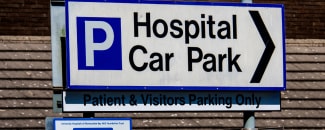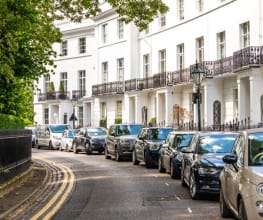Parking garage management is not an easy task in the middle of this crisis. Even in the midst of the national lockdown, parking garages needed to be kept open. They were essential for key workers to be able to get to work and do their job in keeping the country going.
As communities begin to cautiously re-open in most parts of the country, employees are beginning to return to work, families are heading off on days out, and shoppers are visiting town centres once more. With these changes, there is an increased demand for parking facilities to be available. Now more than ever, it is essential that parking facilities are prepared and are as safe as it is possible for them to be.
Parking spaces are now likely to be in more demand than before the lockdown. Continuing government guidance recommends against using public transport whenever possible. This means that many people will take to driving instead and will need somewhere to park their vehicle close to their destination.
Parking garage managers will be working hard to ensure that steps are taken to make parking as safe as possible for customers and staff. There are several things that can be done to help.
Sanitisation
When thinking about sanitisation, a key area to consider is how to keep surfaces clean when they may be touched by multiple people many times a day. This is important because research suggests that it is possible for the coronavirus to survive on surfaces for many hours and even potentially for several days.
Common areas of any parking facility which may be touched regularly include doors and door handles, stairway handrails, parking ticket payment machines, and the buttons on elevators. It is essential that these areas are cleaned thoroughly and frequently. The current expert advice is to use hospital grade cleaning supplies.
It is recommended that hard, non-porous surfaces are cleaned with detergent or soap and then disinfected. For electronics, it is possible to use alcohol based wipes and sprays, as long as they contain at least 70 percent alcohol.
Many public places, such as shops and cafes, now provide hand sanitiser for visitors to use at regular intervals. Parking garages could add hand sanitiser dispensers at strategic points throughout the facility and put up signs encouraging visitors to use these. For example, one could be placed at the entrance to the elevator on each floor, so that visitors use this before and after pressing the elevator buttons. Where possible, sanitiser wipes could also be provided for visitors to wipe down surfaces themselves.
As well as keeping everything as clean as possible, there are other steps that parking garages can take to make the facilities as safe as they can be for customers and staff. A number of these steps can be achieved with the help of technology.
Technology
The biggest thing that technology can do to help with keeping parking facilities safe from coronavirus, is to reduce the amount of times that people need to have contact with each other or with any surfaces. There are various parking technologies that can support parking garage managers to achieve this.
Ticketless parking is an option that many car parks were already introducing prior to the coronavirus pandemic. This means that there is no need for drivers to use cash. It also avoids any queues at parking ticket payment machines in the car park. Many drivers already make use of ticketless parking options as they find that it is quicker, easier and more convenient than having to carry cash for a car park ticket payment machine.
There are several options for how to move to ticketless parking. One way is to allow drivers to pre-pay for their parking online or via phone or app. In combination with Automatic Number Plate Recognition (ANPR), this means that once the driver has registered their vehicle with the car park, they can then simply enter and exit the car park as needed. They will not need to stop and get a ticket on entering or visit a payment machine before leaving. It is all done automatically via number plate recognition and their online registration.
Many car parks now require drivers to pre-book their parking in advance. This helps to make it easier to limit the number of people who are using the car park at any one time and to ensure that drivers are not having to circle the car park looking for an elusive parking space at busy times. Pre-booking could also allow contact details to be recorded in case of any need for track and trace related to coronavirus.
If parking facilities prefer their customers to be able to park without having to pre-book or register in advance, there are still ways in which contact with other people and with surfaces in the parking garage, can be reduced by the use of technology.
One example could be to offer drivers the option of paying for their parking by telephone or on a smart phone app. Using their own mobile devices to pay for their parking is much safer for customers than using a shared parking ticket payment machine where many people have touched the same buttons and where they may have to queue with others to pay. The added advantage of introducing a contactless system like this is that it is also much more convenient for many customers.
Promoting contactless parking ticket systems, such as those described in this article, could encourage customers to make more use of these technologies. As well as reducing the level of risk from coronavirus, ticketless parking is also more convenient for customers, and pre-booking parking spaces in advance ensures that there will be a space waiting for them on arrival. Reducing time spent driving around car parks seeking out a space will also be more environmentally friendly, reduce driver stress, and generally create a much better parking experience for everyone.
In addition to extra care taken over cleaning and sanitisation, and the introduction of technology to reduce contact as much as possible, there are also other ways in which parking garage management can ensure the facilities are as safe as possible.
Management
Good management of the parking garage can help to reduce the number of areas that needs to be frequently sanitised. It is helpful to monitor the use of the parking facilities to gather information about usage patterns.
If you find that there are times when demand for parking spaces is low, consider whether it would be possible to close sections of the parking garage during these times. This would enable cleaning and services to be concentrated in the specific parts of the parking garage where they are most needed. This could also be a good time to consider getting any maintenance or repairs done in the facility. It is much safer for employees to work in a section of the facilities that are closed off to the public.
Communication is key to maintaining a safe environment during the coronavirus pandemic. It is essential that there are clear signs in the parking facilities, explaining to customers how to use the parking garage safely. Don’t worry about overdoing it. It is much better to over-communicate than to have someone miss a vital piece of information. This is especially true while we are all getting used to the new rules and practices that are now needed.
Many car parks use dynamic signs, located at their entrances and at strategic points throughout the facilities. These can be used to remind customers about not touching surfaces, maintaining social distancing, wearing a face covering where applicable, and washing their hands regularly. Signs can also be used to direct customers to their destinations as quickly and easily as possible.
Dynamic signs are particularly useful as they can be easily programmed to give new messages in real time. This means that they can be updated as circumstances change. In the current times, where government guidance is changing so rapidly, this could be very useful for car park managers.
Parking facilities are going to continue to play an important role as our economy, and our country as a whole, adjusts to the new world we find ourselves in, both during and after the pandemic. Even if stricter restrictions are re-introduced, parking will remain an essential service for those who are key workers. On the brighter side, as restrictions are lifted, people are going to be looking forward to heading out and about more. Parking that is convenient, affordable, and above all safe, is going to be essential in supporting this.
In these challenging times, parking garage management is undoubtedly difficult. But there are ways to adapt and ensure that your customers and staff are protected and kept as safe as possible.








